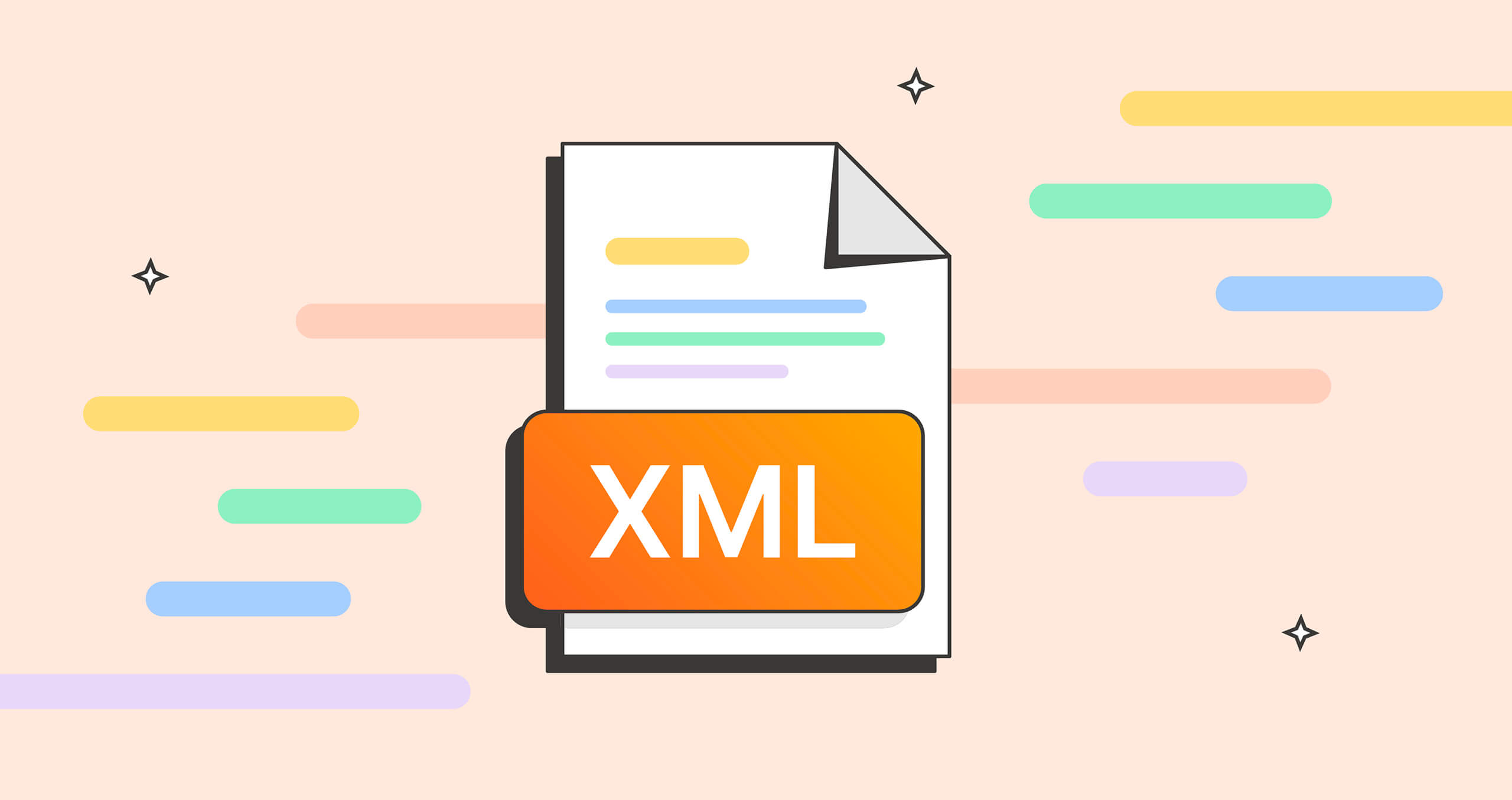XML (Extensible Markup Language) is a programming language that has been around since the late 1990s, but its capabilities and importance are still widely misunderstood. It is often associated with web development, but the truth is that it has many other uses as well. In this article, we will dive into the world of XML files, exploring what they are, how they work, and how they can be used in various industries. From web development to data management, XML files have proven to be an essential tool for organizing and storing information in a structured manner.
What is an XML File?
Before diving into the technical aspects of XML files, let’s start with the basics. XML stands for Extensible Markup Language, and it is a markup language that was designed to store, transport, and exchange data. It is a text-based format that uses tags to describe the structure and content of the data within the file. These tags are similar to HTML tags but are not predefined, which allows for more flexibility in data representation.

XML, short for Extensible Markup Language, is a markup language created for the purpose of storing, transporting, and sharing data
At its core, an XML file is a plain text document that contains a series of elements and attributes. Elements are the building blocks of an XML document and are delimited by start and end tags. Attributes provide additional information about an element and are included within the opening tag.
Each of these elements has a value between the start and end tags, representing the title, author, and year of publication of the book, respectively.
One of the key features of XML is its self-describing nature. This means that XML documents contain all the information necessary to interpret and use their data, making them highly portable and independent of any specific application or platform. Additionally, XML files are human-readable, making it easy for developers and non-technical users alike to understand and work with them.
Creating an XML File
Creating an XML file is relatively simple, as it only requires a text editor and some knowledge of XML syntax. Any plain text editor such as Notepad, TextEdit, or Sublime Text can be used to create and edit XML files. Alternatively, there are numerous XML-specific editors available, such as XMLSpy, Oxygen XML Editor, and Microsoft Visual Studio.
To create an XML file, you need to follow a few basic rules:
- Every XML document must have a root element that contains all other elements.
- All elements must be properly nested – they cannot overlap or leave gaps between each other.
- All elements must have a closing tag, even if they do not have any child elements.
- Attribute values must always be enclosed in quotes.
- Comments can be added using
tags.
Once you have created your XML document, you can save it with the
file extension. It is important to note that XML files do not have a defined structure or schema. This means that the structure and naming conventions used are entirely up to the creator of the document. However, there are various XML schemas and document types (DTDs) that can be used to validate and define the structure of an XML document.
Advantages of Using XML Files
XML has become a popular choice for storing and exchanging data for several reasons. Some of the main advantages of using XML files include:

XML has gained popularity as a preferred method for storing and exchanging data due to various factors
Platform independence
XML files are human and machine-readable, making them platform independent. This means that they can be created, read, and modified on any operating system, making them highly versatile.
Self-describing
As mentioned earlier, XML files are self-describing, meaning that they contain all the information necessary to interpret their data. This makes it easy for developers to share and use data without worrying about compatibility issues between different applications or platforms.
Customizable and extensible
One of the main advantages of XML is its flexibility. Unlike HTML, which has a predefined set of tags, XML allows users to define their own tags and structure their data in a way that makes sense to them. This flexibility makes it ideal for storing different types of data, from simple text to complex structures.
Easy to learn and use
XML has a straightforward syntax that is easy to understand and use, even for non-technical users. With a little bit of practice, anyone can create and manipulate XML files, making it an accessible format for data storage and exchange.
Compatible with other programming languages
XML is not tied to any specific programming language or platform, which means that it can be used in conjunction with other technologies. This makes it an excellent choice for data integration, as it allows for seamless communication between different systems.
Uses of XML Files
XML files have become an essential tool in various industries, thanks to their versatility and compatibility. Some common uses of XML include:
Web development
One of the most common uses of XML is in web development. XML is often used to store content and data for websites, making it easier to update and maintain large amounts of information. It is also used for creating sitemaps, RSS feeds, and other XML-based web services.
Data management
XML’s flexible and customizable nature makes it an ideal format for data management. It is widely used in databases, spreadsheets, and other data storage systems, as it allows for easy manipulation and organization of data.
E-commerce
XML is a popular choice for e-commerce platforms, where it is used to store product information, orders, and customer data. Its extensible nature makes it ideal for handling complex product catalogs and managing large amounts of data.
Mobile applications
Mobile applications often use XML files to store and transport data between devices and servers. This makes it easier for developers to ensure consistency and compatibility between different platforms and operating systems.
Scientific and research data
XML has also found its way into the scientific and research fields, where it is used to store and exchange various types of data, from experimental results to scholarly articles. Its self-describing nature makes it an excellent tool for data sharing and collaboration among researchers.
Working with XML Files
Now that we have covered the basics of XML files and their uses let’s dive into some more advanced techniques for working with them.
Parsing XML
Parsing is the process of reading an XML document and extracting data from it. In programming, parsing is done using an XML parser, which reads the XML document and converts it into a format that can be easily manipulated by the programming language being used. Different programming languages have different methods for parsing XML, such as DOM (Document Object Model) or SAX (Simple API for XML).
Validating XML
Validating XML is the process of checking if an XML document follows the rules and structure defined in its schema or DTD. This ensures that the document is well-formed and contains all the necessary elements and attributes. Most XML editors have built-in validation tools, but there are also standalone validators available online.
Transforming XML
XML can be transformed into other formats using a process known as XSLT (Extensible Stylesheet Language Transformations). XSLT is a language used to transform XML into other formats, such as HTML, CSV, or even another XML document. This makes it easier to integrate XML data into existing systems and applications.
Querying XML
XML documents can be queried using XPath (XML Path Language), which is a syntax for navigating through an XML document and selecting specific elements or attributes based on their location. This is particularly useful when dealing with large XML files, where finding specific information manually can be time-consuming.
Best Practices for Working with XML Files
Now that we have explored the various uses of XML and some of the techniques for working with them, let’s look at some best practices for creating and managing XML files.

The flexibility of XML is a significant advantage, though it can also pose challenges if not applied judiciously
Use meaningful element names and attribute values
One of the key advantages of XML is its flexibility, but this can also be a double-edged sword if not used appropriately. When creating an XML document, it is essential to use meaningful and descriptive names for elements and attribute values. This will make your document easier to understand and navigate, especially when working with larger files.
Include comments and documentation
Including comments within your XML document is a great way to provide additional context and explanation for the data being stored. Comments can also be useful for other developers who may need to work with your code in the future. Additionally, it is helpful to include documentation that explains the structure and purpose of the XML document, making it easier for others to use and understand.
Validate your XML documents
Validating your XML documents is essential to ensure their integrity and compatibility with other systems. By validating your XML files, you can catch any errors early on and avoid potential issues down the road.
Keep your XML documents well-formed
An XML document must be well-formed, meaning that it follows the basic rules of XML syntax. This includes having properly nested elements and closing tags, as well as using quotes around attribute values. A well-formed XML document is easier to work with and less likely to cause issues when being parsed or transformed.
Common Errors to Avoid in XML Files
As with any programming language, there are some common mistakes that developers make when working with XML files. Knowing these mistakes will help you avoid them and create cleaner and more efficient XML code.
Missing closing tags
One of the most common errors in XML documents is forgetting to add a closing tag for an element. This can lead to parsing errors and make it difficult to identify where the mistake lies. It is essential to double-check your code and ensure that all elements have both opening and closing tags.
Improperly nested elements
Another common error is incorrectly nesting elements within each other. This can happen if an end tag is misplaced or missing altogether. This type of error can be challenging to spot, especially in larger XML files, so taking the time to carefully check your code is crucial.
Incorrect attribute values
Attribute values must always be enclosed in quotes, either single or double. Omitting the quotes or using the wrong type can cause issues when validating or transforming your XML document. It is essential to use quotes consistently for all attributes to avoid any unexpected errors.
Typos and misspellings
Spelling mistakes and typos can cause significant problems when working with XML files. Unlike web browsers, which can automatically correct certain mistakes, XML parsers are strict and will flag any errors. Therefore, it is vital to check your code for spelling mistakes and typos before saving and validating your XML document.
Implementing XML in Real-World Scenarios
Now that we have covered the ins and outs of XML files and how to work with them let’s explore some real-world examples of XML in action.
RSS Feeds
RSS (Rich Site Summary) feeds are a popular way of syndicating web content, allowing users to subscribe to their favorite websites and receive updates in one centralized location. RSS feeds use XML to organize and deliver the content, making it easy for developers to integrate into their websites and applications.
E-commerce product catalogs
E-commerce platforms often use XML files to store and manage their product catalogs. This allows for easy integration with other systems, such as search engines or product comparison sites. XML provides a flexible and customizable way to store large amounts of data, making it an ideal choice for e-commerce businesses.
Data exchange between different systems
XML is an excellent tool for data integration between different systems and applications. This makes it possible to share and exchange data between different platforms, making collaboration and communication more efficient and seamless.
Configuring software applications
Many software applications use XML files to store configuration data. This makes it easier to customize and manage various settings without needing to modify the application’s code. By using XML, developers can easily add new features and options without having to release a new version of the software.
Conclusion
In conclusion, XML files have proven to be a powerful and versatile tool for storing, organizing, and exchanging data. From web development to data management, XML has found its way into various industries and continues to play a crucial role in modern technology. By understanding the basics of XML and implementing best practices, you can harness the power of this programming language and take your projects to the next level. So go ahead, start creating, parsing, and transforming your XML files and see how they can enhance your workflow and improve your data management capabilities.



